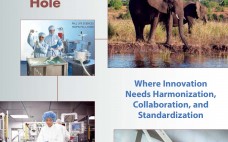The importance of investing science and technology into drug product development has become evident as different product types, higher protein concentrations, and doses and requirements for improved delivery of biological drug products have increased. The need to give patients larger and more concentrated doses has challenged formulation scientists and driven development of new technologies that can deliver those doses. Delivery devices fall under device regulations and have distinctly different design, development, and validation requirements from those of protein drug products…
Business
Modern Technology Transfer Strategies for Biopharmaceutical Companies
Application of industrial biotechnology has changed dramatically over the past decade. Stainless steel process equipment has largely given way to disposable systems, facilitating easier and quicker process configurations and up-scaling. Suppliers generally made incremental advances in the quality of raw materials and consumables to ensure that those could more readily comply, “off the shelf,” with regulatory expectations. Once out-of-reach analytical equipment such as mass spectrometers and cell analyzers are becoming more common place in development laboratories, which better enables biopharmaceutical…
Expanded Change Protocols: Benefits, Cost Considerations, and Regulatory Views
The US FDA Office of Biotechnology Products’ quality by design (QbD) pilot program defines an expanded change protocol (eCP) as a particular type of comparability protocol that will “describe the quality by design, risk- based approach linking attributes and processes to product performance safety, and efficacy” (1). Sponsors have explored a wide range of potential applications for eCPs (e.g., movement within or beyond an established design space, site transfers, and additional process modifications supported by either a QbD or traditional…
A Quick Guide for Sourcing Biopharmaceutical Raw Materials
Before the ratification of regulatory guidelines from The International Conference on Harmonisation of Technical Requirements for Registration of Pharmaceuticals for Human Use (ICH) Q8–Q11 (1–4) — whose scope includes raw materials for biopharmaceutical production — many drug manufacturers chose the most cost-effective and readily available raw materials sourcing options without specifically considering the provenance of those materials. Depending on the chosen supply chain, such materials could be of widely varying quality and not necessarily suitable for a destined application. Raw-material…
A Case for Biopharmaceutical Operations in Low-Cost Countries to Maximize Return on Investment
A company’s success is associated with its growth. An expanding company hires more employees (full-time equivalents, FTEs) to support its commercial products, to develop new products, and to provide administrative services. As it grows, an organization can become more complex and its operations less efficient. Analysis of 2013 financial data showed that revenue of US biopharmaceutical companies increases with a growing number of FTEs at a slower rate than does cost (1). That study assumed that all US biopharmaceutical companies…
Special Report: The Path to Vaccine Profitability
Managing vaccine supply chain improvements involves a complex interaction of laboratories, other facilities, CMOs, and suppliers. Since the business of making vaccines became a commercial proposition, profitability has often been elusive. The economics are difficult: Costs of development and production, already high, are rising. Profit margins historically have been lower than those of other pharmaceutical products, in part because of the complexities of manufacturing and distributing vaccines as well as their stringent safety, testing, and quality requirements.
Cancer Innovation Forum Calls for Improving US Research “Ecosystem”
Accelerating the commercialization of promising new cancer treatments relies on ensuring that patients — individually and collectively — are actively involved throughout research and drug development. This was the consensus of leading scientists, advocates, and government officials meeting in Washington, DC, at the first national policy forum convened by the Cancer Innovation Coalition (CIC). A collaboration of cancer stakeholder organizations and others working through a national campaign called Project Innovation — which is spearheaded by National Patient Advocate Foundation (NPAF)…
Fundamental Strategies for Viral Clearance – Part 1: Exploring the Regulatory Implications
Over the past several decades, biologics such as monoclonal antibodies (MAbs) and recombinant proteins have provided therapeutic benefits and efficacy for the treatment of human disease. Completion of the human genome project (launched in 1990) produced a draft of the genome in 2001. A full sequence was published on the 50th anniversary (2003) of the initial publication of Watson and Crick’s papers on the double-helical structure of DNA (1). That large volume of genetic information has been translated into usable…
The Single-Use Watering Hole: Where Innovation Needs Harmonization, Collaboration, and Standardization
Within the past few years, the single-use technology (SUT) arena of the biopharmaceutical industry has exploded in growth. Leading organizations have predictably and understandably stampeded to the “watering hole” of single-use to drink up the advantages that disposable components offer over traditional multiuse parts and technologies. The initial value and risk-reduction results are being realized — but not without the emergence of other trade-offs. End users continue to call for standardization in emerging areas of the industry while also recognizing…
The CMC Strategy Forum Series, Part 1 – QbD and Risk Management
Introduction by Cheryl Scott The CMC Strategy Forum series provides a venue for biopharmaceutical product discussion. The meetings focus on relevant chemistry, manufacturing, and controls (CMC) issues throughout the life cycle of a therapeutic and thereby foster collaborative technical and regulatory interaction. Forum chairs share information with regulatory agencies to help them merge good scientific and regulatory practices. Outcomes of the forum meetings are published in BioProcess International. This process is meant to help ensure that biopharmaceutical products manufactured with…








